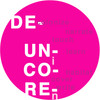Voices Otherwise: Yalt
meditations on Three Suns and one Rain in Chuvash tradition
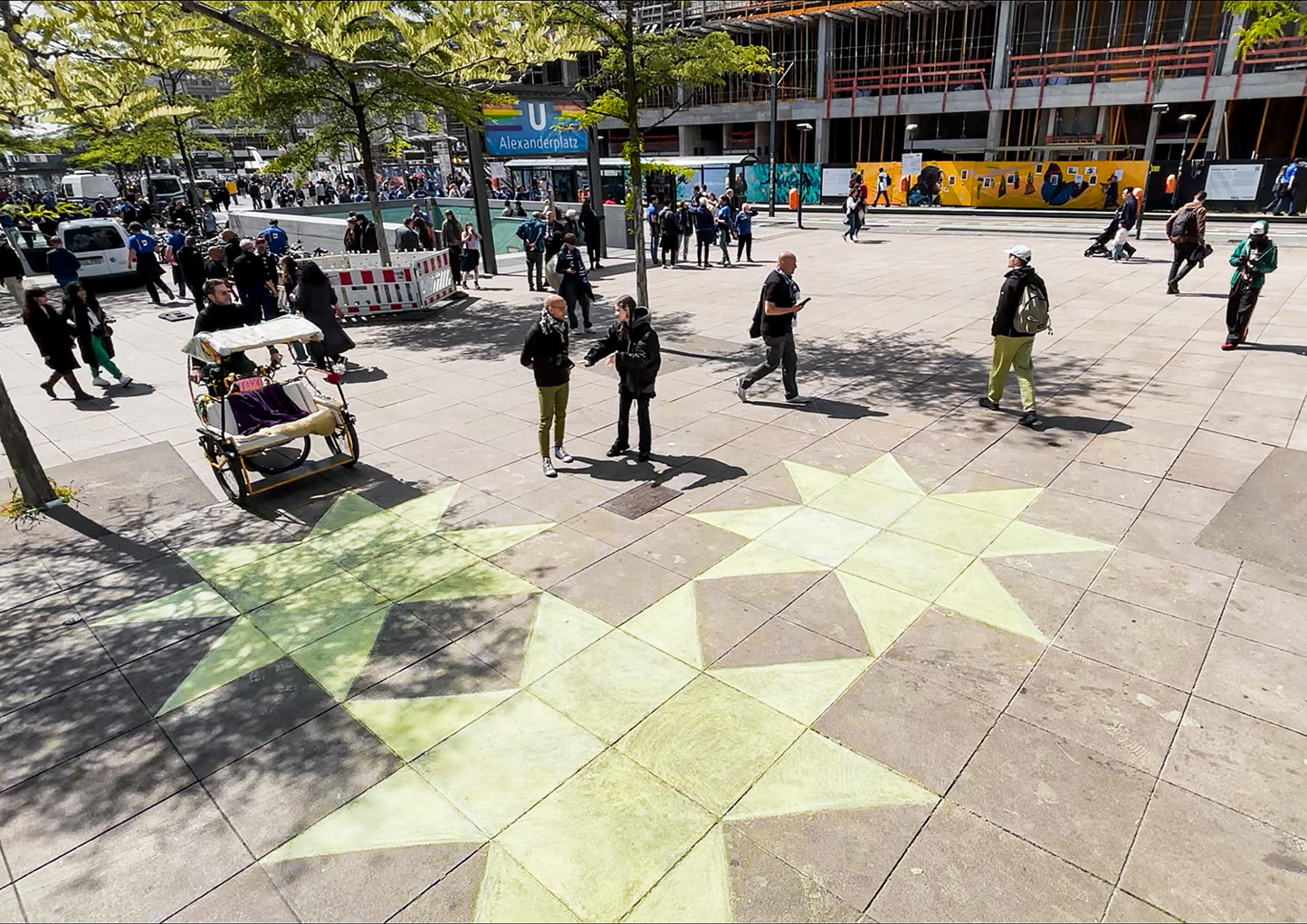
- Viktoriia Şăltăr on Forming Light with a Thought
- Vişĕ Hĕvеl
- Хуркайӑк ҫулӗ
- Irina Denkmann on Forms of Confessions, Physical Forces and Rain
- Denis Esakov on Non-Obvious Relations and Coincidences that are Disturbing but Giving a Hope
- Border Spaces
- Archive of Light
The best kind of art, like the rain, invokes
a re-ordering of cognitive and sensory fields.
It asks its actual and potential public
to open doors and windows and
let the other worlds in.
Raqs Media Collective, Wonderful Uncertainty,
76-82, in: Curating and Educational turn,
ed. Paul O’Neil, 2010.
I’ll tell you right now, the doors of the world
of the wild Self are few but precious. If you
have a deep scar, that is a door, if you
have an old story, that is a door.
If you love the sky and the water so much
you almost can not bear it, that is a door.
Clarissa Pinkola Estés,
Women Who Run with the Wolves,
London 2022, (1st ed. 1992)
It is hard to forget something you never knew—just as it is hard to lose something you never truly had. And yet, in many ways, both are entirely possible. Loss can take the shape of imagining a future child so vividly that a mother believes she has seen its face, despite a miscarriage. It’s the echo of a grandmother’s words that no one else remembers. It’s the beloved home that remains sharp in your mind’s eye, even though it hasn’t existed for decades. It’s the emotional void of almost having. The pain of an intense imagining that longs to be made real, yet never fully takes form.
As the title of Viktoriia Şăltăr’s series of events suggests, Yalt as meaning the flash of the light in Chuvash language, a lot of our thinking here will be evolving around a memory that flashes in all its forms. Thinking of returning to the homeland —often from afar—brings chuvash people promptly to a vision of summer. Sunny Chuvashia [Солнечная Чувашия], appears in the mind’s eye with warm, grandmotherly arms and the dark, tender waters of the Volga River. Time unfolds at Zaliv, in the heart of Cheboksary, among soft green slopes and gentle evening lights.
These are the lights of the sun and stars—and also of human attempts to imitate them—in the cozy Cheboksary [chuv. Шупашкар], the capital of the Chuvash Republic. Is this peaceful light imagined by those in pain or is this memory and longing is a “door” to remembering ourselves?
This question reflects Viktoriia Şăltăr’s autoethnographic project Yalt, realized in May 2025 in Berlin as part of the Voices Otherwise residency program organized by de_colonialangage collective in Open Air Museum of Decoloniality (Alexanderplatz, Berlin) and in chto delat Emergency Project Room. The Yalt project involved participative performance, Signal Window display and installation, poetry reading and collective cooking of Shürpe soup. Jointly these actions are carefully through acts of re-connection, re-existence, and perhaps a form of reward—not only for those from Chuvashia, but for all of us who yearn for home.
The artist explores the Chuvash myth of Three Suns [Vişĕ Hĕvеl] and translates her reading into space so that the views may become part of the old sayings instead of observing it from the sides. In resemblance to that myth three people Viktoriia Şăltăr, Denis Esakov and Irina Denkmann offer their headspace to think of the myths, arts and nature forces of chuvash tradition. Relevantly for the topic, three heads here should build a microcosm in which no one is talking from a position of authority, and everybody is sharing knowledge with each other instead. As Raqs Media Collective points out, a conversation between three people is an opposition to hierarchy created by authority of written text; thus we are happy to share our humble written trilogy with a broader public.
Viktoriia Şăltăr on Forming Light with a Thought
What is particularly interesting about the quality of light is its ambiguety and for that quality we took the chuvash word Yalt. It means a flash of light no longer present yet continuing to dazzle and captures the paradoxical nature of impact despite physical absence. Light and memory in proportions and balanced elements were supposed to unfold gradually in practice. Thus it was important to turn to alternative presentation models by weaving together mythology, poetry and sensual connections to radiant elements and tastes. As a result they helped to reveal temporal and spatial bonds between people.
Vişĕ Hĕvеl
The meditation on chuvash ontological system and the roots of its cosmology was formed in three equality important parts of Yalt: collective participative performance in Open Air Museum of Decoloniality, ornamental installations Vişĕ Hĕvеl (chuv. Three Suns) and Хуркайӑк ҫулӗ [Hurkajăk çulӗ] (chuv. Red Path) in chto delat Emergency Project Room and mediation with reading the poetry of Anuar Duisenbinov and Igor Sivtsev and cooking soup Shürpe. We started in public space, moved into more private community space, then proceeded our approximation to physical and emotional “body” in mediation with poetry and food. Hereby the soup was Shürpe chosen among other reasons for its festive connotation in many türkick traditions, and while it is still cooked in chuvash families. I like the idea of celebration of intimacy.
Both the Open Air Museum of Decoloniality performance and the installation in the chto delat Emergency Project Room draw from the myth of Three Suns. Originally, three celestial bodies illuminated the world simultaneously, their combined radiance generating abundance beyond human imagination. Human intervention in this cosmogonic order created an irrevocable change and thus a sort of loss, which now unfolds through culture and memory.
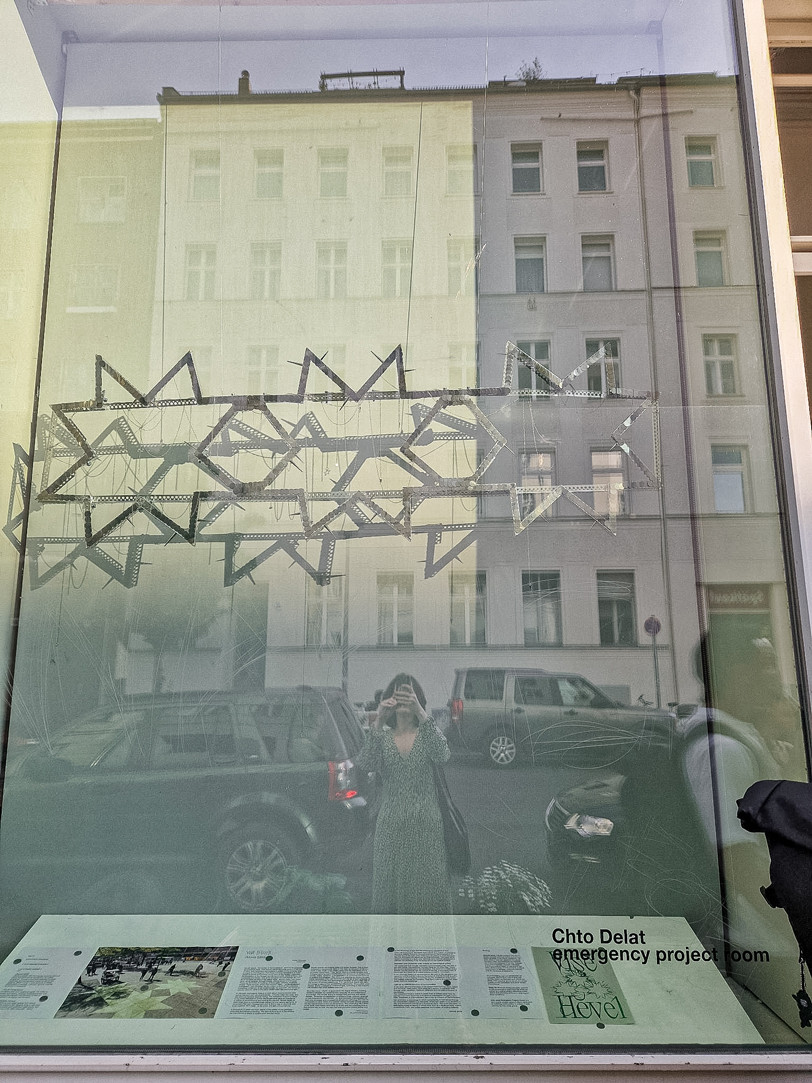
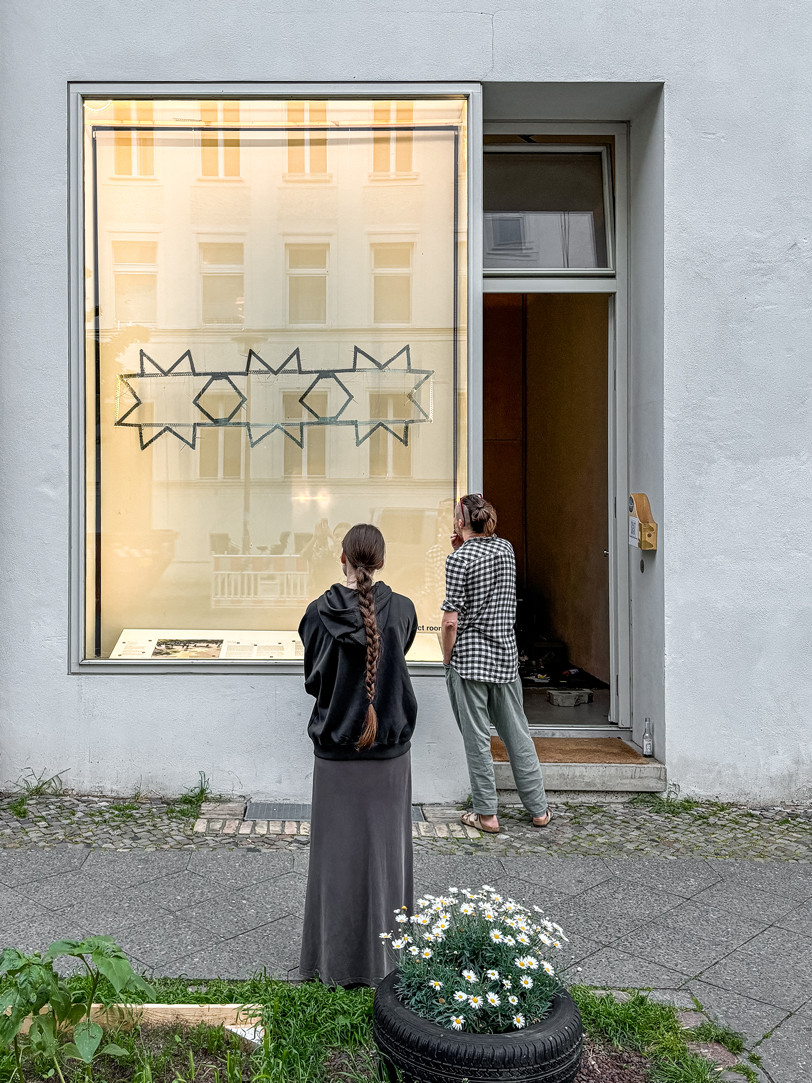
Хуркайӑк ҫулӗ
The Path of the Wild Goose [Хуркайӑк ҫулӗ] — the traditional Chuvash name for the Milky Way — forms the installation’s second order. Stretched beads and metallic threads float above visitors' heads in the airy hall, representing a spatial axis, movement as a trace — the routed memory of cosmic travel.
My method centers on intense imagination. I envision Chuvashia with distinct technological achievements and aesthetics, possessing unique questions and challenges. I speak a language formed from dreams and myths, from observing wind and stars. This thread of images and feelings connects me to countless ancestors — a humming network of stories forming a socio-spiritual framework. All I encounter rituals, respect for elders, and the transmission of names and songs, manifests them in my dreams and visions. And I focus on holding it. Such a state allows me to inhabit multiple temporalities simultaneously: my lineage’s voice speaks within me, collective experience guides action.
I imagine serving as a continuator of the line, translating ancestral whispers into contemporary language.
Repetition in this space holds special significance as time’s rhythmic foundation. The lineage operates not through linear time but through cycles. Repetition creates structure through which the past returns, echoing back. Time becomes a spiral, its turns intersecting through rituals and memories. Annual celebrations of holidays and songs create deep meaning by connecting us with all previous performances of such art, making us part of a continuous circle dance.
Sometimes I allow myself to escape into this world, connecting so deeply that I cease speaking of "my Chuvashia" as separate from myself. Rather than escapism, this becomes a way to avoid self-exoticism while breathing life into what circumstances have frozen in time. Yalt's gleam embeds itself in relationships between form, space, and direction. Thus in this imagination light exists as a system within these relationships, manifesting through order, repetition, measure, reflection, and surface tension.
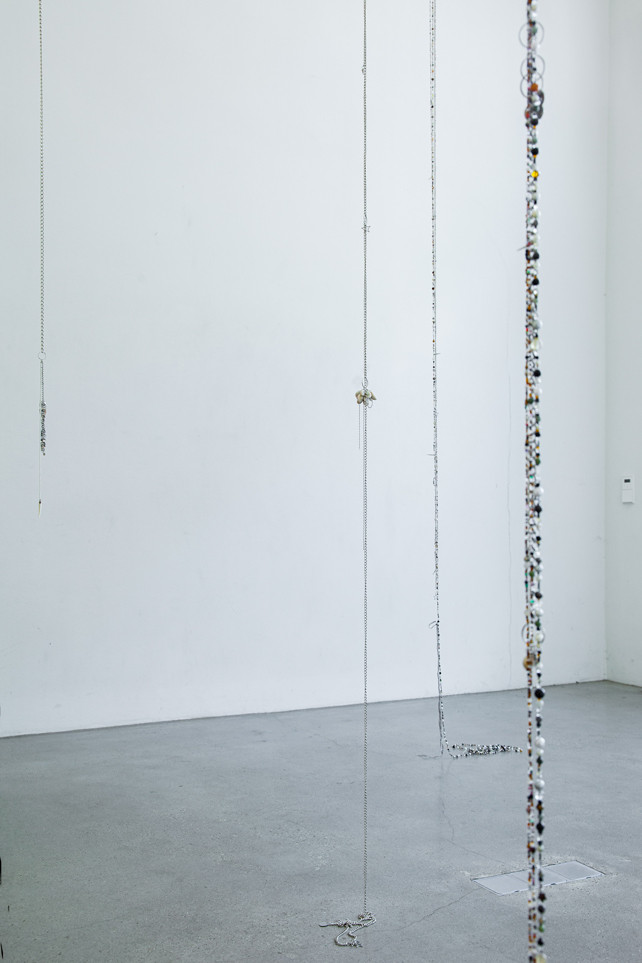
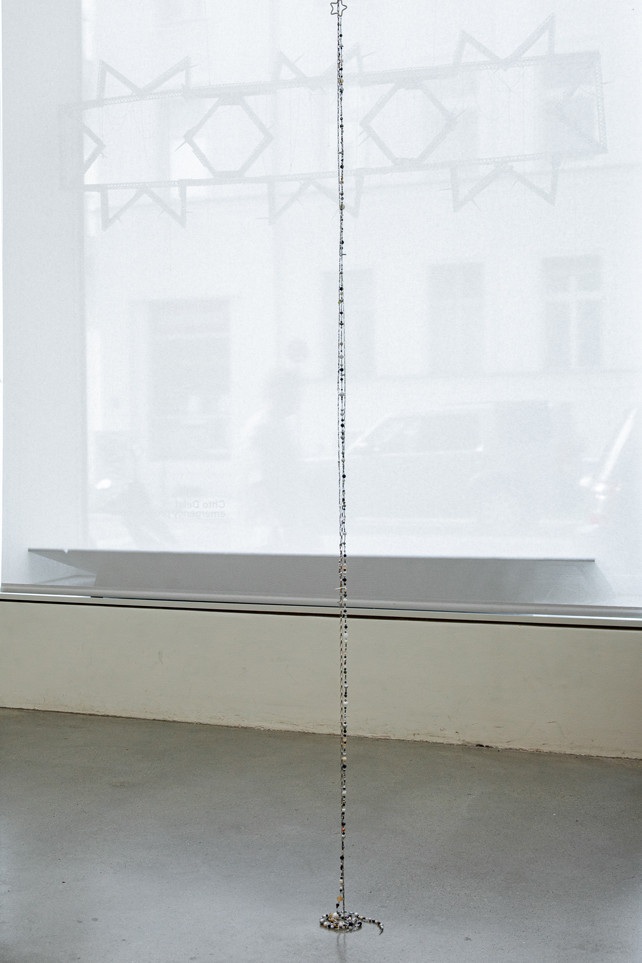
Irina Denkmann on Forms of Confessions, Physical Forces and Rain
Stories open countless pathways when they step into the light and offer themselves to be seen and discussed. They can feel like long-awaited nourishment, especially when narratives emerge from feeling, sensual experience, and wordless understanding. Raqs Media Collective explores how art can surface this "non-knowing knowledge" through the senses—like rain finally breaking through a hot, dusty summer. They’re driven by our deep need to communicate personal and generational experiences that often go unspoken. By engaging with myth and reflecting on ontological systems and Chuvash cosmology, they’re trying to open dialogue about knowledge that exists beyond words—that immediate recognition we feel when we see or experience something profound.
This inquiry into sensory knowledge and unspoken understanding finds particular resonance in the examination of Chuvash mythology, where stories carry the weight of fragmented histories and survived through layers of erasure. The Three Suns myth, like the rain that Raqs Media Collective invokes, offers nourishment to a landscape marked by cultural drought—yet accessing this knowledge requires navigating the complex terrain of damaged archives and interrupted traditions.
At the moment there is no particular understanding of how to deal with sources left over in Chuvash archives. All of them, digitalised or not, have undergone numerous steps of eradication, censorship and exoticization. Nevertheless, I would like to add at least two historical accounts about different traditions and peoples that co-existed or suffered in different time spans on the territory of Chuvash Republic.
The territory has in fact a lot of threesome issues reflected in cultural as well as social political situation, as it has borders with other religious groups and even linguistic families (Tatarstan, Mari El, Nizhnii Novgorod, Mordovia). This as we see has a distant reflection in fairy tales and mythology. Ethnographer Ekaterina Yagafova who wrote numerous articles on cultural features of Chuvash people names three confessions that influenced both everyday existence and worldview in the region: Christianity, Chuvash Paganism and Islam. Relationships between the traditional rituals including marriage and funerals Yagafova described as "the process of experimenting with the 'norm, ' the process of creating 'norms, ' the 'rivalry for the right to legitimately represent the 'original, ' authentic norm, to authoritatively interpret it, and to identify oneself with it (or with the normative community)." The presence of these three neighbours intensified conflict potential in the XVIII century, as the enforced christianisation of Chuvashia and its neighbors started. Over the course of the XIX century Christianity developed into the most visible and acknowledged religion. The rise of one religion instead of three and subsequent prohibition of all religions in Soviet Union time in the beginning of XX century may have been stored in some vague forms in myths. Yet that would only be possible if for example the myth of Three Suns (Vişĕ Hĕvеl) would have been not older than three hundred years, which is quite a young age considering the history of Chuvash culture.
The second association with this myth that comes to my mind is the power relations in an earlier period, within the time of Volga Bulgaria. Bulgaria or Bulgar state flourished between the IX and XII centuries near the confluence of the Volga and Kama Rivers, in present-day European Russia. A culturally diverse and multi-ethnic polity, it was home to significant populations of Bulgars, Finno-Ugrians, Varangians, and East Slavs. Owing to its strategic location, Volga Bulgaria established a regional trade monopoly, maintaining vibrant commercial ties with the Norse, Cumans, and Pannonian Avars. The time of the rise of Bulgaria coincides with the warming of the climate in the region, and the Cheremshan Basin becoming a region with fertile soil. Some of the researchers connect the very formation of the Bulgar state with intense development of agriculture in this region.
In the XIII century the Mongol-Tatars defeated Volga Bulgaria and destroyed about 2,000 settlements. Among other consequences these genocidal events caused a decrease of Chuvash population to one third of its previous amount, which in turn led to a temporal end of intensive farming with significant changes in the ecosystem. As researcher Modurov states before the population of the region started to use land for farming again after the Time of Troubles (Beginning of XVII century) the territory has majorly re-forestated with birch and aspen woods. The landscape has changed with the result of lessening the amount of land that could be used for farming.
Here as well the myth of Vişĕ Hĕvеl [Three Suns] may be seen as a distant echo of past events.
Important to mention is that there are other fairy tales that depict similar dramatic events. One of the examples is Sier Bator (chuv. for "Son of the Earth") starts as following: "A great and terrible calamity befell the world: the king of all snakes and dragons, the mighty twelve-headed Astakha, captured the sun and the moon and swallowed them whole." The story is about a disaster that demolishes all the people on earth except three brothers-warriors. But at the end it’s the Sier Bator, the brother that manages to overcome the twelve-headed dragon Astakha and thus becomes a "bigger" hero as other brothers. If Sier Bator is also an allegory of neighbors living together, then some people saved others. The light of the star, past events, that no longer exist is in my view a long awaited impulse to ask further questions and reexamine the current knowledge under new lеns.
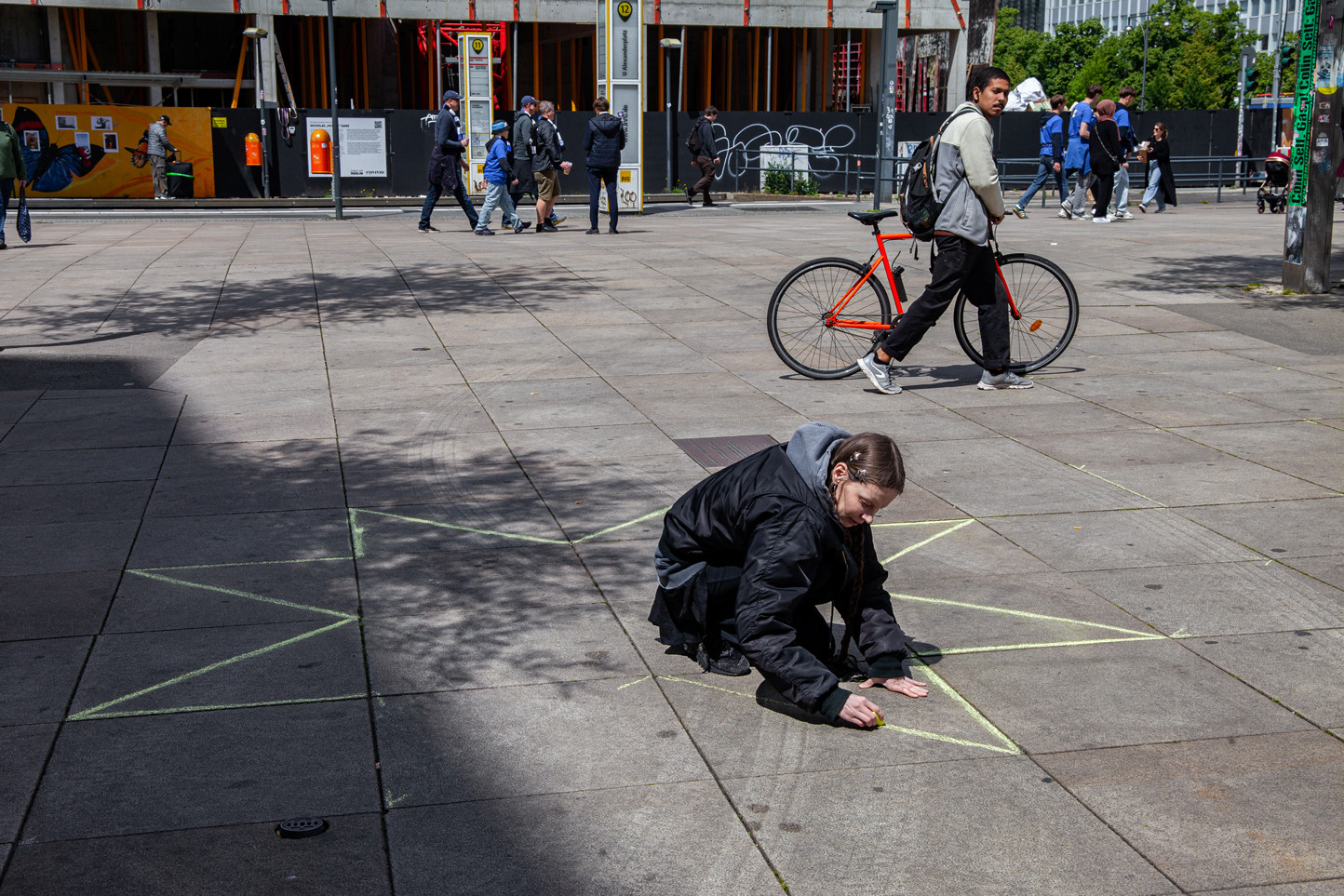
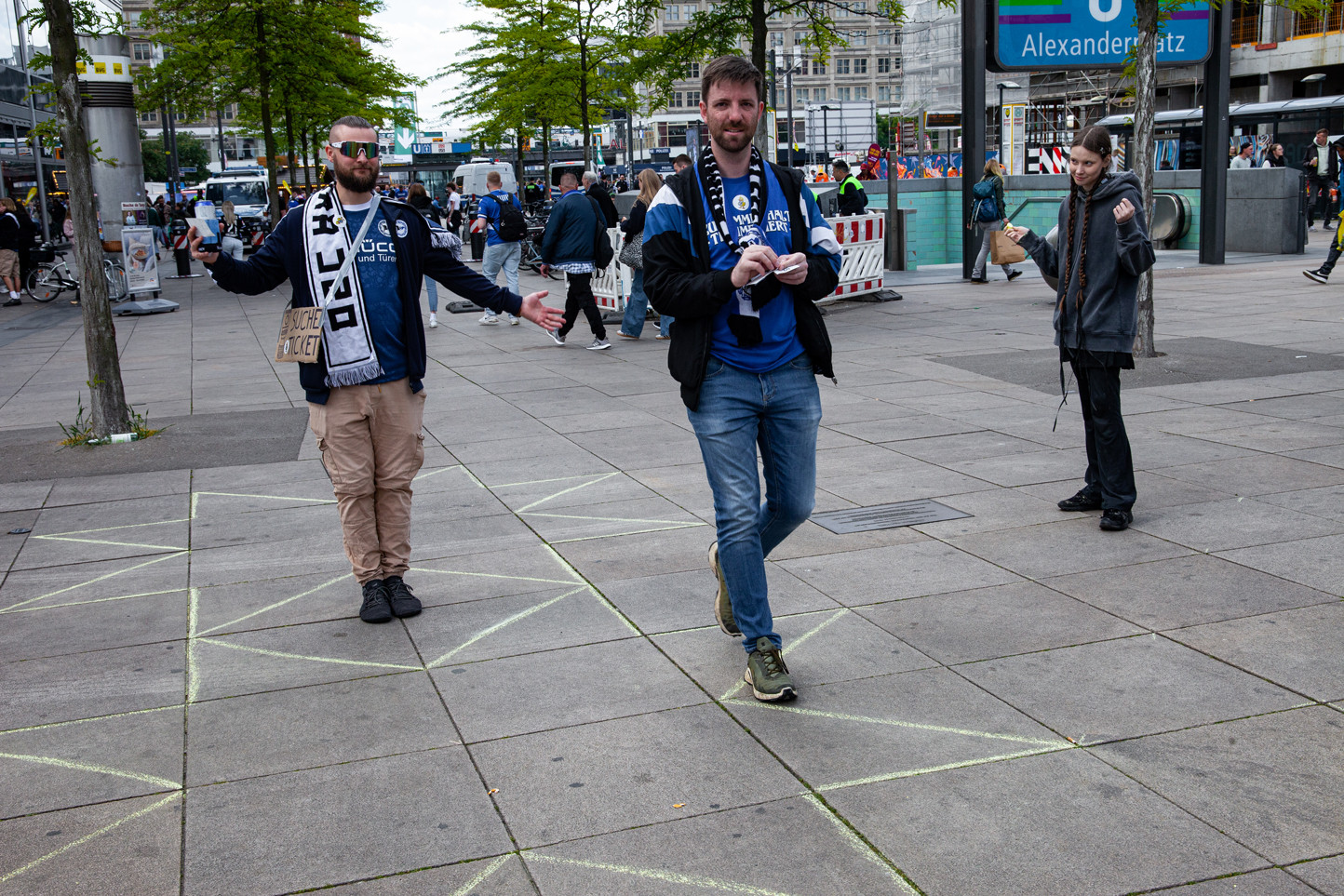
Denis Esakov on Non-Obvious Relations and Coincidences that are Disturbing but Giving a Hope
Border Spaces
Border spaces — frontiers or borderlands — seem to be graspable geographical areas. Their presence becomes especially evident in wartime, their brutality and injustice are evident in the everyday lives of migrants and refugees, their sharp reductive cartography constantly questioned by artists and activists. In the case of the Russian Federation—the successor to the Russian and Soviet empires—these certainties are hidden or blurred. One of the borderlands runs through the center of this country’s gigantic expanse, across rivers, over mountains, along steppes, through forests, among alases and tundras. These are territories of métissage—of languages, cultures, traditions, and peoples. These spaces were aggressively named by colonizers as "dark," "undeveloped," "uncivilized," "non-Christian." It turned out to be fundamentally the opposite—the forces of colonial violence came to the place where there was and is the light.
In Chuvash cosmogony there is a myth about three luminaries and human intrusion into natural processes — a hunter killed two suns, and the third one became fearfully hiding.
The realization of such a critically traumatic disturbance of the natural elements gave an impulse to a culture of remembrance and healing the trauma.
People began to draw three suns to commemorate respect for the natural elements, to remember their own mistakes and and to find a way to reconcile and to be together. ЯЛТ [Yalt]! — Is the shine, the light. It is a memory.
Archive of Light
A myth hundreds of years old warns about the traps of the Anthropocene and technological thinking. The light of three suns is the archive, the importance of which is evident from the first touch. Border spaces are keeping these and similar archives. One of them unfolded on the concrete slabs of the Open Air Museum of Decoloniality in May 2025, just meters away from the Weltzeituhr, the so-called "world clock." This "world" clock is a complex metallic technological rotating object containing a very limited set of geographical names, Arabic numerals, images of continents, and symbols of science and progress. These clocks were attacked by climate activists Letzte Generation [Last Generation] in autumn 2024, precisely as a symbol of progress and technological thinking which, in their view, is the reason for the climate catastrophe. This mechanical object was painted orange, warning of approaching disaster. Three yellow suns blazed, shone, unfolded an archive of light, reminding us that irreparable intrusion had once already occurred.

The process of unfolding the archive itself proved deeper than I could have imagined. The three suns drawn in chalk took up several square meters. In such an area, chalk becomes dust and spreads like sparks of light across the entire space. To concentrate the suns, those participating in this process began smoothing the chalk [sparks of the solar archive] by their palms on platz surface. An act of tenderness toward a space that usually receives only the soles of insensitive shoes. Exactly in this place 36 years ago, on November 4, 1989, a massive demonstration of Berliners took place demanding the demolition of yet another gigantic Anthropocene intervention—the Berlin Wall. On the day of the gentle archive unfolding, this platz was filled with football fans—some photographed themselves with the suns, others walked through them, carrying the sparkling archives further through Berlin’s streets on their shoes.

This night is irredeemable.
Where you are, it is still bright.
At the gates of Jerusalem,
a black sun is alight.
Osip Mandelstam, 1916
The context of this city is very important. Suns also keeps local archives. Here, less than a century ago, one of the symbols of the sun was banned, and this prohibition remains relevant today. This black sun is still used by monocultural radical ideologies, and their followers are becoming more visible in our time. In this same city, the blue six-rayed sun is permitted and present on many government buildings, despite the incredible amount of violence and dehumanization committed under the sign of this blue sun in Palestine. Blue sun is alight and burning Palestinians stronger than ever…
We drew three yellow eight-beam suns from the Chuvash myth to remember that people’s actions will be remembered and discussed long after their completion. And we would like them to be filled not only with the bitterness of irretrievable losses.
A week later, the shine—Yalt! —appeared on the Signal Window of chto delat Emergency Project Room, building relations between our contemporary everyday life and indigenous knowledge. Poetry readings took place there with Anuar Duisenbinov and Igor Sivtsev, in Turkic languages—bilingual Qazaq and Russian, and Sakha. The field of language also introduced Shürpe, collective cooking and a space of togetherness that shared food creates. The mixing of languages—food, memory, poetry, shine, togetherness—this is the fundamental principle of breaking the tradition of silence, contrary to biblical myth and Christian "purity."
The space of the borderland is located here and now and sends signals. The frontier space is located here and now and sends signals. Territories of intersection of different times, cultures, languages are everywhere, are between us. And dominant monospaces are held only by power and propaganda situational mythology that has no connection to other times and spaces. Mixed complex diverse spaces are the natural state of eco-social-systems. The continuing YALT-shine of the three suns keeps reminding us of this and the unfolding time of this archive has no limit,
the light will hold and retell stories further and longer ~~>
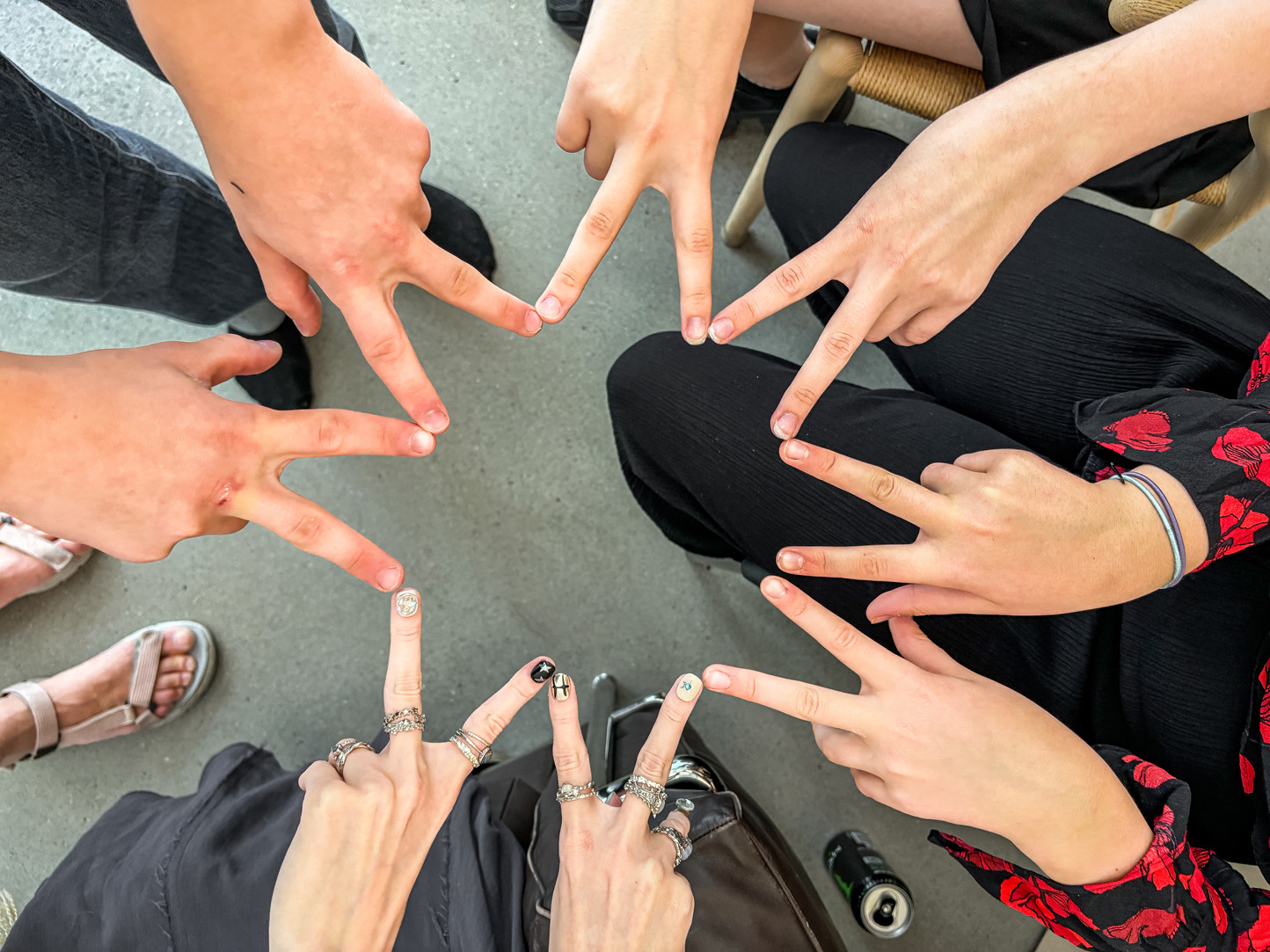
Anastasia Kolas
Anuar Duisenbinov
de_colonialangauge collective
Igor Sivtsev
Irina Denkmann
Julia Panova
Chto Delat group
Saahan Arigolla
Stas Leontyev
Victor Seletskyi
Viktoriia Şăltăr
Das Projekt wird aus Mitteln des Programms des Landes Berlin zur kulturellen Infrastrukturerhaltung und -entwicklung in den Bezirken (Bezirkskulturfonds) gefördert.

